
This page last modified: 26 July 2015 (Ammianus reference updated)

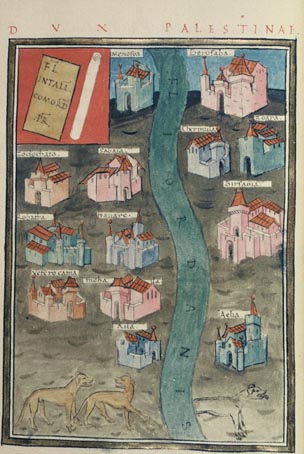 Frontpiece from the Bodleian manuscript (O). The stations depicted are: Menoida, Berosaba, Zodocatha, Sabaia, Chermula, Zoara, Robatha, Hauare, Birsama, Veterocania, Mohaila, Aila, Aelia. Note that not only is the ordering very different from the textual list, but Robatha has no corresponding entry in the textual list. |
The following units or detachments of units, and a prefect and his legionary unit, are listed as being under the command of the Duke of Palestine (the numbers in front of the names refer to Ingo Maier's numbering scheme):
59.2 Equites Dalmatae Illyriciani, at Benosabaealong with the following units from a "lesser register": 59.15 Ala prima miliaria Sebastena, at Asuada |
Note that Seeck interpolated (OR.XXXIV.27) an entry reading Equites sagittarii indigenae Robatha after 59.10 Equites sagittarii indigenae Hauanae, and bracketed the "sagittarii indigenae" in 59.11 for deletion, to produce:
Equites promiti indigenae Zodocathaepresumably because a fort called Robatha appears in the frontpiece; but why he felt that meant "sagittarii indigenae" should be deleted I have no idea; perhaps he thought the inclusion of another unit of Equites sagittarii indigenae at 59.10.1 in addition to 59.11 would be one such unit too many.
Equites sagittarii indigenae Hauanae
Equites sagittarii indigenae Zoarae
[Equites sagittarii indigenae Robatha]
Equites primi felicessagittarii indigenaePalaestini Sabure siue Ueterocariae
Equites sagittarii indigenae Moahile
The Dux Palaestinae controls the only unit of dromedarii (camel-mounted soldiers, in other words) listed in the Notitia outside Egypt; the other three units are under the Dux Thebaidos.
The men under the Praefectus legionis decimae Fretensis are the old Legio X Fretensis, stationed at Ailae (modern Aqaba in Jordan on the Red Sea), where they had been transferred in the 3rd century; previously they had been based in Jeruslaem. It is possible that the Decimanique Fortenses that Ammianus records (18.9.3) as being destroyed at Amida in 359 AD were a detachment of this unit, having arrived there by forced marches before the siege (Ammianus' text as it has come down to us may have been corrupted, for apparently 8 units are listed, not the 7 he states: the Legiones V Parthica, Magnetiaci, Decentiaci, Tricensimani, Decimani, Fortenses, Superventores, & Praeventores; accordingly, many have taken "Decimanique Fortenses" to refer to a single unit, and not two); it has been proposed that the text be amended to "Decimanique Fretenses", thereby reducing similarly the number of legions by one, as none of the legions numbered X are otherwise recorded as being styled Fortenses. Another less likely possibility is an otherwise unknown Tenth legion of 3rd century origin called the Fortenses (not beyond the realms of possibility, given an apparent Legio XII Victrix known only from bricks from Strasbourg dating to the 3rd/4th century).
Below are shown the frontpieces from the Parisian manuscript, P; and the Froben printed edition, B:
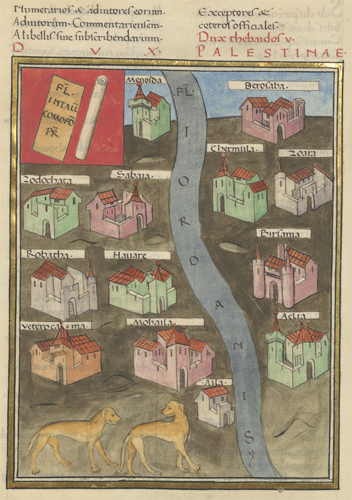
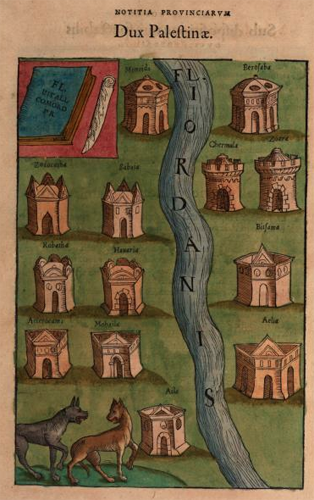
Note how some text from the previous list, that of the Dux Thebaidos, overflows on to the page in P. Below are shown the frontpieces from the first set of pictures in the Munich manuscript, M; and the second set, W.
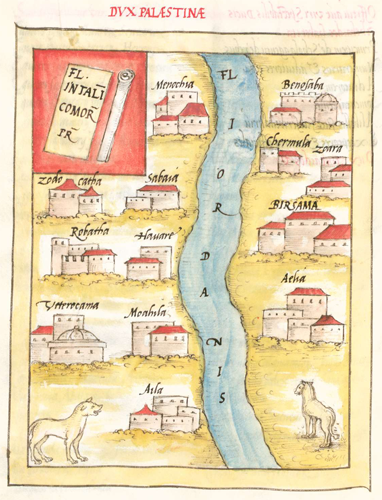
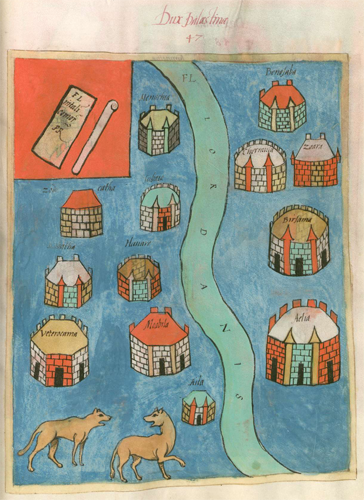

Return to the Notitia index page.